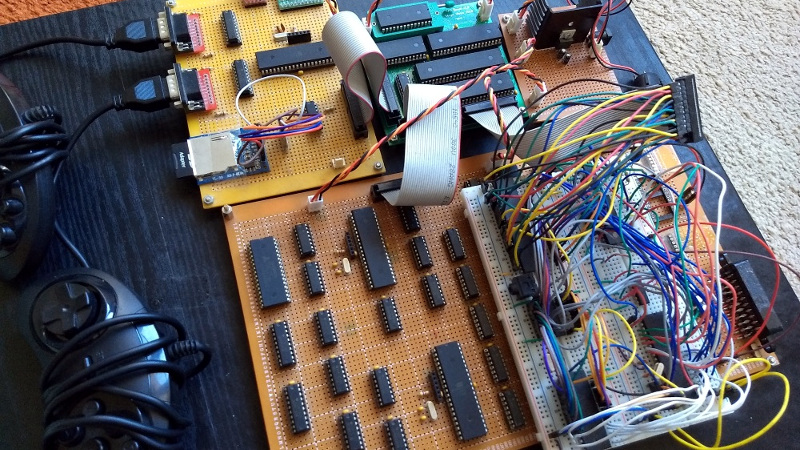We see a lot of retrocomputing projects here at Hackaday that take devices from the 8-bit era and re-create them in the 21st century. Sometimes they remain period-accurate and stick to all contemporary devices, but in other cases they take full advantage of four decades of advancing technology. [Pkiller]’s Z80 console is one of this later category, creating peripherals for the classic CPU using microcontrollers in the place of the banks of 74 logic or ULA chips that might have graced a 1980s machine.
The video generation hardware produces a PAL signal using an interesting technique involving two RAM buffers. An ATmega644 microcontroller composites a single frame into one of the buffers while another ATmega644 is generating the previous frame of video from the other buffer. On each change of frame the buffers are switched between the two microcontrollers, requiring some extra 74 logic chips. Another AtMega chip provides the Z80 with I/O interfacing, and the sound comes via another dual-buffer microcontroller setup and a quick return to classic hardware with a YM3438 FM synthesis chip. The result can be seen in the video below, and would have not looked out of place in a late-’80s or even early-’90s living room.
Some people might ask why so much trouble should be gone to in the pursuit of a project like this one, but to do so is to miss the point. Sure, a Sega Master System can be had from the usual sources, but in creating project such as this one the builder has to truly understand the technologies such as PAL generation or the internals of a Z80 in great detail. The result while it is undeniably impressive is almost secondary to the process of reaching it.
Via Hacker News, and thanks [Adam Munich] for the tip.
















It’s an interesting solution having two rams that’s moved between the cpu and gfx unit for double buffering for the video ram (and also avoid bus contention/arbitration). Did any commercial 80’s-era machines do something similar?
I doubt it lol as it halves the ram available which was expensive back then. Its a great idea though and shows how old tech can be improved. Interestingly a similar setup is used in modern dual clutch gearboxes to reduce clutch wear.
76h
i love seeing that i’m not the only one who doesn’t believe in neat cut-exactly-to-length breadboarding technique